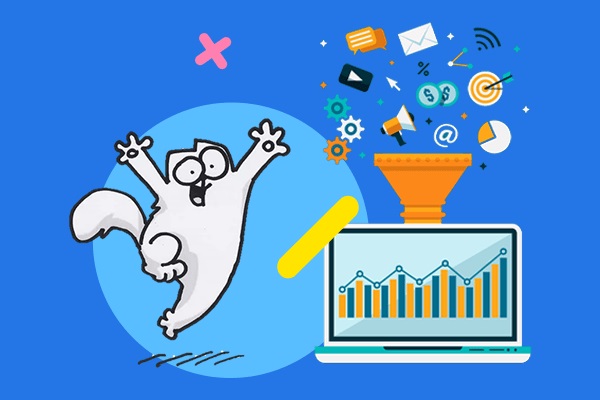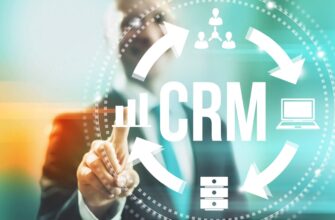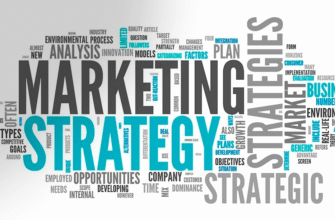- What is a sales funnel?
- Why do I need a sales funnel?
- How to create a sales funnel?
- Sales funnel structure example
- Main stages of creating a sales funnel
- 1. Awareness
- 2. Interest
- 3. Intent
- 4. Order (Purchase)
- 5. Retention (Loyalty)
- What is the difference between sales funnels for B2C and B2B?
- Speed of decision-making
- More complex product
- Lead magnet
- What types of sales funnels can you use?
- Classic
- Branching
- With feedback
- Automated
- Principles of building a sales funnel
- Popular mistakes when setting up a sales funnel
Sales funnel is a popular marketing model based on consumer behavior. It schematically shows the process of turning a potential buyer into an actual one, passing by customers through all stages of buying goods or services.
This marketing tool is actively used to plan and analyze the level of business performance. With the correct alignment of the sales funnel, its implementation in CRM and professional analysis of the effectiveness of interaction with customers, the company’s profit increases many times over.
The model showed the same efficiency both for offline trading and when interacting with consumers online. In the latter case, “automated” funnels are more often used.
How many calls and sales will I get by ordering contextual advertising from you?
I need to calculate the conversion of my website Describe
the task
in the application
Calculate potential ad revenue Google
contextual advertising calculator
What is a sales funnel?

The sales funnel has proven to be a highly effective analytical tool that allows you to see how a future buyer makes a decision to purchase a product, as well as to understand what motivates him to close the transaction.
The model allows you to control the behavior of customers, stir up their interest, and motivate them to buy. If it is depicted as a graphic object, then it will really look like a funnel or a pyramid, but upside down.
The principle of the sales funnel is that it breaks the total mass of potential buyers into separate segments, taking into account their behavior and interest.
For example, there are two people who want to buy a vehicle, but at the same time, the first one is still deciding whether to choose a car or a motorcycle, and the second has already finally decided that a car will suit his lifestyle better. There is a significant difference between them – one is already ready to see the cars in your showroom, and the second can eventually choose a motorcycle or even a bicycle.
Why do I need a sales funnel?
A sales funnel gives you the opportunity to optimize your trading and maximize your chances. This highly effective marketing tool allows you to analyze the behavior of customers in the process of purchasing goods or services, to identify their motivation or reasons for not buying.
The purpose of the sales funnel is to provide control at all stages of interaction with customers and forecast the development of the sales process. With it, you can:
- Identify the needs of the target audience, the path of consumers from the first acquaintance with the service or product to the transaction.
- Divide the advertising company into segments, taking into account the desires and interests of future consumers.
- Evaluate the effectiveness of the use of certain marketing tools.
- Identify weak points in the sales process and the cost of acquiring each subsequent customer.
How to create a sales funnel?
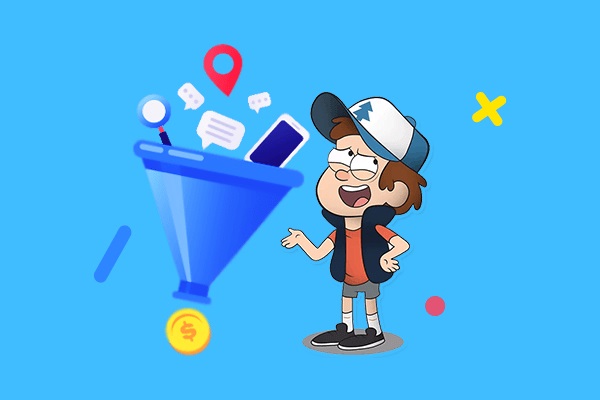
Before creating a sales funnel, you should approve the ways of interacting with future customers. Outside the network, this can be a variety of promotions in crowded places, etc.
On the web, search promotion, the use of contextual advertising, blocks in social networks, and cold calls showed high efficiency. People who are interested in the offer move on to the next step. This can be any interaction with your company: going to the company’s Internet resource, calling a manager, sending a letter through a special form, and so on. At this point, it is important to convince customers that your service or product suits them and will completely solve their problem.
For ordinary visitors to the company’s Internet resource, content will play a paramount role. The client’s ability to move to the next stage or go on further searches directly depends on its quality.
Important! Unpleasant surprises for the potential consumer, such as price increases or the absence of additional free services, which were reported at the initial stage, should be completely eliminated.
When building a b2b sales funnel at this stage, it is advisable for a potential partner to send a carefully thought-out commercial offer.
The final stage of the process is the purchase or transaction. After that, you can try to turn the newly minted client into a permanent one with the help of additional interesting offers or just say goodbye to him.
When offline trading, a control call is made after a certain time after the completion of the transaction. The client can be offered a complementary product to the one already purchased or service at the service center.
Sales funnel structure example
A typical example of an online sales funnel looks like this:
- Ad in Google Ads – the user sees your offer. Here you need to interest him so that he goes to the site;
- Landing page – the visitor explores the offer. It is important that the price is indicated, there are high-quality, preferably real, photos, the terms of delivery and return are described;
- Adding goods to the cart – the order form should be simple and understandable, contain a minimum of fields, there should be no technical errors;
- Order and pay for goods – some users will want to pay for the goods upon receipt, others – on the contrary, prepayment to the card;
- Google Ads remarketing – we advertise to those who have already bought our product and offer related products or services, or inform about new discounts and promotions.
Let’s take a closer look at each stage of the funnel.
Main stages of creating a sales funnel
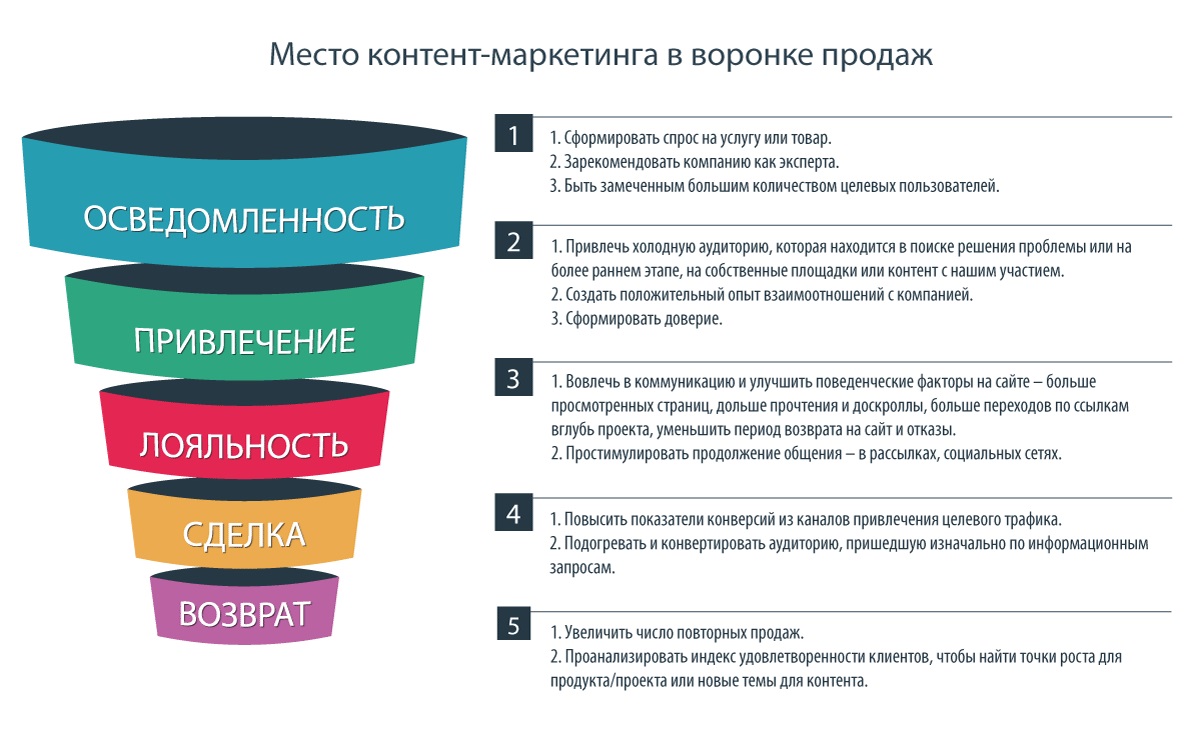
The structure of the sales funnel is almost the same for everyone, although slight changes can be made to its model, taking into account the peculiarities of the business.
Different sales specialists may give their names to the first stage, but the essence of this does not change – the path to purchasing a product will always begin with the future buyer getting to know the product or service.
1. Awareness
First of all, a potential client has a certain problem that he wants to solve and uses the Internet to find a solution. The future consumer does not yet have an exact idea of the product that he needs. For example, the old computer is out of order, and there is a task to purchase a new one. But since the client is not well versed in computers, he does not know exactly which one is better for him to purchase.
Important! At the initial stage, the best way to interact with a client is search promotion or contextual advertising. When a potential client starts their search on the Internet, your company will be among the top results.
You need to remember that a person is not ready to buy yet, do not try to sell something faster at the first stage of interaction. You should create high-quality content in order to present information to potential buyers as clearly as possible about the company’s activities, the types of tasks that can be solved using your product or services.
It is necessary to demonstrate the knowledge of an expert in order to gain the trust of the audience and bring them one step closer to closing the deal.
2. Interest
At this stage, people already know who you are. After attracting attention and interest from potential consumers, you should continue active interaction and develop contacts further.
The potential customer has already done a lot of research and received all the information about the type of product he needs. Now a person needs to decide where exactly and under what conditions he will acquire it.
Important! At this stage, it is very important to distinguish yourself favorably from your competitors. You need to gradually bring potential customers closer to the decision to close the deal, focusing on the unique characteristics of your product and the special benefits that it can provide.
People almost don’t react to tough sales anymore. At this stage, it is necessary to competently build a dialogue with the client, offer a personal solution, consult, answer all the questions that have arisen.
3. Intent
At the intention stage, the user has already fully understood the essence of their problem. He did a lot of research and figured out what product he needs to get to solve his problem. Now he is looking for where to buy it.
The main task at this stage is to convince a potential client to order from you. To convince him you can:
Show what exactly buying in your store will be more profitable than in a competitor. For example, you can offer an accessory as a gift along with the main product or have it delivered for free.
How many calls and sales will I get by ordering contextual advertising from you?
I need to calculate the conversion of my website Describe
the task
in the application
Calculate potential ad revenue Google
contextual advertising calculator
In addition, you can provide real testimonials, reviews and unboxings of the product so that future customers know what other buyers think about the brand, the goods or services offered, and the overall impression of the company.
4. Order (Purchase)
The order stage is the climax of every sales funnel. Step by step, thoughtful movement of the client to the actual purchase is the main task of the remaining stages.
After closing the transaction, you should try to continue the relationship with the counterparty so that they go beyond one purchase. It’s always easier to resell your product to a former customer than it is to resell a new customer. He is already familiar with the product, there is no need to spend extra money on advertising.
5. Retention (Loyalty)
Each new customer goes through the main stages of the sales funnel. Whether a new client becomes a regular depends on many factors. Of course, the consumer characteristics of the product play a major role, but this is not all that is necessary for long-term retention and customer interest.
There are a huge number of similar goods and services on the market, and people will choose the company with which to cooperate as comfortably and safely as possible.
Clear work of the customer support department and the implementation of a loyalty program are important. Consumers should feel feedback and be able to get professional advice if needed. You should check and debug all stages of delivery, eliminate existing problems.
The applied sales funnel structure will be most effective if communication with customers is not neglected. It is necessary to continue to create relevant content to keep the interest of buyers. It will be useful to collect their feedback on the purchased product, find out their impressions after using it, wishes, and so on.
What is the difference between sales funnels for B2C and B2B?
In B2B niches, the advertiser is dealing with a completely different target audience from the one that can be found in the B2C segment. These audiences have different goals and needs:

For this reason, the approach to building a sales funnel for these audiences will be different. Here are some features to consider:
Speed of decision-making
Most businesses that work with end consumers are focused on a quick sale. The client saw an advertisement for a product, evaluated several offers from different stores, placed an order, and picked it up at the post office. The exception is expensive purchases (for example, real estate). In this case, the buyer will go for a viewing, examine several objects, consult with relatives, find out the cost of a mortgage, etc.
For the B2B sphere, everything is different from most B2C topics. The sales funnel here is more complex, it includes many intermediate stages. The final decision to conclude a deal is often made collectively, at different stages a purchasing manager, financial director, business owner and others may be involved.
Accordingly, a B2B sales funnel may include negotiations with each of the decision makers, drafting a commercial offer, calculating the final cost, etc.
More complex product
Due to the individuality of many solutions for the B2B sector, many business owners may need an explanation – what benefits they will receive by ordering your service, what pains they will cover.
Most likely, a regular landing page will not be enough for this – create a section on the site with popular questions and answers, a blog with details of the offer.
At the same time, it is important to carry out explanatory work with the client at the upper stages of the funnel. Keep this in mind when setting up an advertising campaign and choosing traffic sources.
Lead magnet
For B2C, any gift or discount can be used as a lead magnet. For example, when ordering a coffee machine, a month’s supply of coffee is a gift. This works well for B2C, but if your client is a business, you first need to show him how professionally he will benefit by ordering a service or product.
For example, a trial period works well for online services. Using the CRM system is free, as long as there are no more than 3 employees in the company. Sooner or later, the company will grow, the business owner is already used to this CRM, and it is highly likely that he will switch to a paid plan.
What types of sales funnels can you use?
There are several types of sales funnels. Usually, a specific option is chosen depending on the specifics of the business and the needs of the target audience.
Classic
This is the basic version, depicting the customer journey from their first contact to making a purchase. It usually consists of five sequential stages:
- Awareness. At this stage, the potential buyer must learn about the existence of the product.
- Interest. The initial formation of interest in a product or service.
- Desire. The customer is shown the advantages and benefits he will receive after the purchase.
- Action. At this stage, the customer should be encouraged to make a purchase.
- Loyalty. Further customer retention – getting feedback and incentivizing repeat orders.
The classic funnel is suitable for most businesses, especially in the B2C sector.
Branching
Used when the target audience may have different paths to ordering depending on motivation, personal preferences, or a particular situation. For example, a company sells bicycles and also provides bicycle rental services.
At the decision-making stage, the customer funnel can take two paths – if the customer has enough money, he can buy a bicycle for personal use, and if he is not ready to buy it yet, he can rent it. It is the job of the marketer and sales team to determine what the customer’s goals are and guide them down the right path.
With feedback
It involves interaction with the customer after the purchase in order to get feedback – how satisfied he is with the product and what can be improved. This allows you to identify weaknesses in the sales process, improve the customer’s interaction with the product, and increase loyalty.
For example, after an order, a survey is sent to the customer, he fills out the questionnaire, after which the company analyzes the answers, publishes a review on the website, and then sends the customer a thank you and a bonus for participating in the survey. This approach encourages repeat sales and increases brand loyalty.
Automated
This is a sequence of actions that nudge a potential customer to buy without the involvement of a live salesperson. A variety of marketing tools are usually used for automation – lead magnets, series of emails, webinars, chatbots and others.
In this way, a chain of touches is formed, along which a person goes from the first contact with the brand to making a purchase. Automation simplifies and speeds up the sales process and helps to scale the business.
Principles of building a sales funnel
When forming a sales funnel, it is important to expand not only its “throat”, but also its “walls” with the help of lead generation. It is necessary to work out each stage, improving the intermediate conversion. You should start from the stage where the maximum number of leads is lost.
Important! Focus on what works: products, channels, territories, and audiences. Only for successful solutions it is advisable to increase funding.
If you use many search channels at once, then the best strategy is to build a sales funnel for each of them. The path of a potential partner in this case will be different, but the base of the funnel will contain identical stages.
Funnel stages and company processes can be the same in meaning. Sometimes it makes sense to combine several stages into one, for example, invoicing by an accountant and a sales specialist.
Remember that customers can move forward or backward in the funnel.
Popular mistakes when setting up a sales funnel
When setting up a sales funnel, marketers often make similar mistakes. Here are the most popular ones:
- Untargeted traffic. Most often, the conversion is at a low level due to working with the wrong audience. It is necessary to focus on the sources of visitors, as well as the reasons and motives for their transition. Irrelevant keywords should be removed from the CL, targeting should be optimized. Content should not deceive the expectations of people who have visited the Internet resource and attract the right audience.
- A bait product that replaces the main product. It is important that the products that start interaction with the counterparty lead to the purchase of the advertised product, and do not become an absolutely independent product. Even worse, if the attention-grabbing product can partially or completely replace the main one.
- Content is incomprehensible to the main audience due to the use of complex professional terms and so on. In this case, buyers will need special knowledge to understand the characteristics of the product. Few people want to understand complex terms, and, most likely, the visitor will simply leave the site.
- Complex funnel structure. The number of sales can be affected by both extra steps and too fast movement of the consumer through the funnel. He will quickly lose interest in the organization’s website and product if he is forced to fill out long forms, fill up with unnecessary offers, etc. The more fields you need to fill in, the less likely it is that the visitor will linger on the company’s Internet resource.
- One universal funnel for all segments of the target audience. Different groups of customers may have different needs, objections, and levels of product knowledge. Therefore, it is more effective to create separate funnels, adjusting to the specifics of each segment. For example, new visitors to the site should be informed more about the benefits of the product, and regular customers should be offered exclusive discounts and personal recommendations. A special approach is required for “cold” leads who are not yet familiar with the brand.

